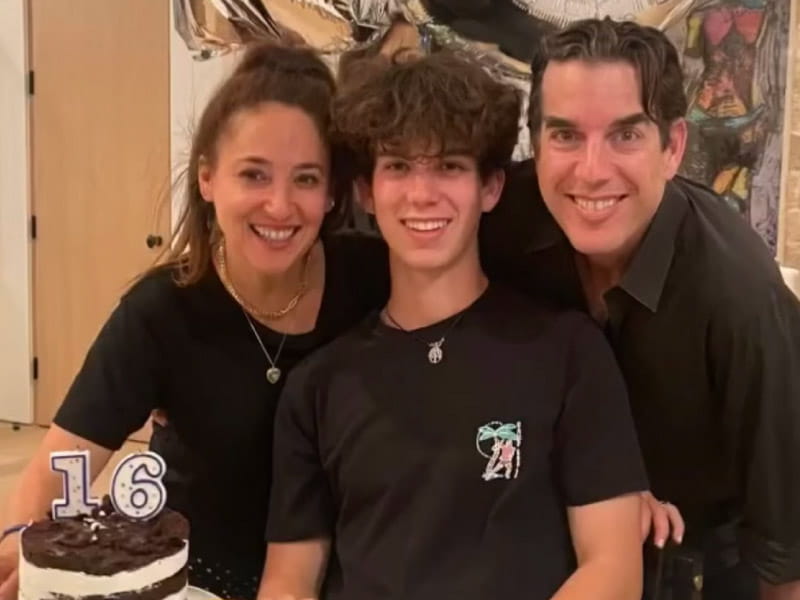As a teen, she discovered she wasn't expected to live to 40. She's 47.
By Lindsey Giardino, American Heart Association News

Sara Dorband was in her kitchen looking for a piece of paper to draw on.
Opening a drawer, she saw a document with the University of California, San Francisco letterhead. Even though she was only in seventh grade, Dorband knew it had something to do with her.
She was born at the UCSF hospital with a serious heart defect called transposition of the great arteries. As the name suggests, her heart's two main arteries were reversed, causing a lack of oxygen to the rest of her body. She was only 4 months old when open-heart surgery treated the problem.
She grew up with a scar on her chest and instructions to walk instead of run during gym class at school. Otherwise, she lived a normal life. Well, there was one unusual thing. She often took part in research studies at UCSF.
The document she accidentally found shared the results of one such study.
Beyond the medicalese, the letter included a line that even a middle schooler could comprehend: Her life expectancy was only into her third decade. Put another way, she was considered unlikely to see her 40s.
Dorband quickly shoved the document back in the drawer and went up to her room.
She never told her parents. She never told her friends. She never told her doctors.
The secret haunted her teens. And her 20s. The 30s were especially tough.
Her 40th birthday was a day filled with both joy and dread.
Dorband's story is ultimately triumphant. It just took a lot of struggling to get there.
While the metaphor "waiting for the other shoe to drop" loomed in Dorband's mind, she continued living. She graduated high school, earned a college degree and launched a career in marketing.
Her secret manifested in health anxiety. She thought in extremes. If she was out of breath, she figured she was in heart failure. Discomfort in her leg was a blood clot. Sometimes she soothed herself by eating. She never sought help from a therapist. Her best coping mechanism was trying to tuck away the secret into the back of her mind. She compartmentalized everything.
In college, she met a guy named Matt. When their relationship became serious, Sara shared something with him.
Not the prognosis from the letter. That remained locked away. Instead, she offered another medical detail more germane to a possible life together: Because of her heart problems, it would be unsafe for her to become pregnant.
"I choose you," he said. "We'll figure it out."
A few years into their marriage, the couple began thinking about starting a family. A high-risk pregnancy specialist reiterated what Sara already knew; it would be too dangerous for her to carry a child because of her heart condition. They chose to have a surrogate deliver their baby. They also were concerned about any potential risk of their child inheriting a heart problem.
During the pregnancy, the surrogate mother underwent imaging to study the baby's heart.
Everything came back clear.
Their son, Max, ended up being diagnosed with a heart murmur. It's common in children and doctors told Sara the condition was unrelated to her heart defect.
For Sara, the joys of motherhood always came with a twist. As much as she enjoyed milestones, vacations and even the simple act of watching Max play sports, a sense of dread always followed.
As her 40th birthday neared, the fear intensified. Was her time almost up?
When the big day arrived, she kept it simple: a sushi dinner with Matt and Max. Any sense that she'd triumphed over that doctor's prediction was washed away by a new thought: Things are going to start going downhill from here.
A couple of months later, Sara was on a walk with a friend. She started to feel numb in her left arm. Then her left leg. She quickly lost all feeling on that side of her body. She couldn't speak.
Her friend dialed 911.
Sara knew she was having a stroke.
During her open-heart surgery as a baby, she had received a baffle, which is a surgically created structure within the heart that redirects blood flow. Hers was leaking. A blood clot had passed through the leak and entered an artery that supplies blood to the brain, causing her stroke.
She received an implanted device to close the baffle leak and was discharged within a few days. The stroke left no lasting physical issues.
Sara didn't just survive her long-expected brush with mortality. She came away from it thriving, embracing an entirely new outlook.
She finally started seeing a therapist, which has helped her feel calmer and more productive. There are many examples of that: She self-published a children's book about living with invisible differences, found a passion for light jogging, joined a weekly dance class and co-founded a company that makes disposable medical bras that support patient privacy and enhance the patient experience.
"Every day, I'm amazed at how well Sara has been able to manage the balance between her health and day-to-day living," Matt said. "She wears her heart condition as a badge of honor and resiliency and of the progress she has made in life despite her health limitations. She is proud of the woman she has become."
Best of all, Max is a healthy, athletic 17-year-old.
"He's everything I wasn't," said Sara, now 47 and living in Los Angeles.
"Life has been full of many experiences that I never thought possible," she added. "The pride I have felt watching Max live such a beautifully unencumbered childhood has satisfied all of my curiosity of what feeling invincible looks like. Now I live in gratitude instead of fear."
Stories From the Heart chronicles the inspiring journeys of heart disease and stroke survivors, caregivers and advocates.





